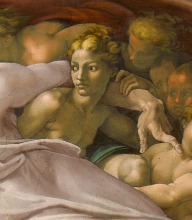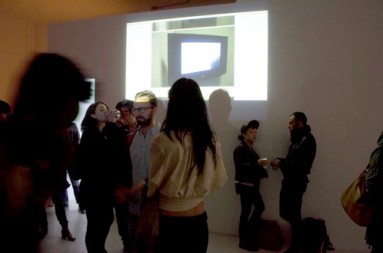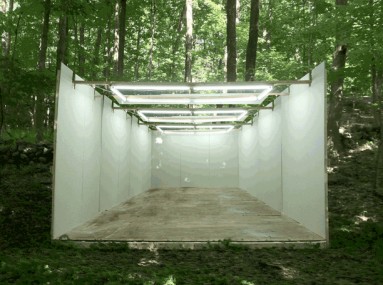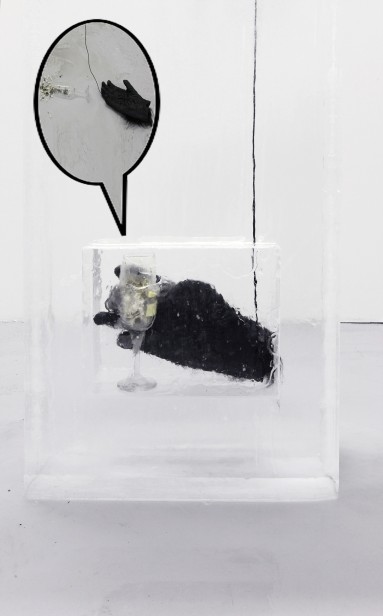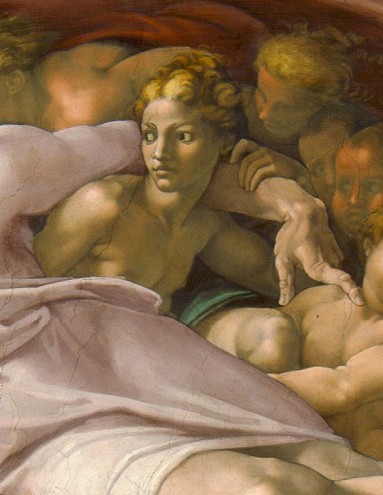
The difference between artworks and their documentation images online is collapsing. So is the prestige economy of traditional galleries
Far more people see art on screens than in museums. The gallery is no longer the primary exhibition space; the Internet is. As documentation—photographs or videos that capture a finished work of art, usually installed within a gallery—are posted to the Internet and then dispersed and multiplied via likes and shares, online viewers become the overwhelming majority of an exhibition’s audience. The digital image is supplanting the art object. All works, regardless of their material constituents, are flattened, scaled down to several hundred pixels. Consequently, the digital photographic image can be understood as the homogenizing, ubiquitous medium of our era.
If the Internet is the main space in which art meets its audience, then documentation media must be considered an artistic medium in its own right, the most consequential representation of an artist or curator’s work. Artworks exist not as physical entities, but as JPEGs, and their visibility relies not on their physical presence within a gallery but on their online accessibility. The gallery, then, serves not as the “true” exhibition venue but the site of a photo shoot—the backdrop to the installation photo. It provides the opportunity to document art within an institutionalized context in preparation for its release into online circulation.
Aware that the physical exhibitions they design will eventually be re-presented immaterially, curators may adapt their practice to accommodate an online audience, leaning toward photogenic artworks and exhibition designs. But as artists and curators anticipate the Internet as the ultimate exhibition space, what function will the physical exhibition space serve? If installing works in galleries is only a means to an end—i.e. the documentation image—will the gallery become unnecessary?
Traditionally, we think of the gallery as having the following functions: providing an exhibition space that allows the public to view art; offering the artist and the curator exposure and access to their consumers; and acting as an intermediary between artists and the market, providing artists with the potential to earn an income as a professional. The first two functions, which connect cultural producers with their audiences, can be executed much more efficiently on the Internet. Artists have the ability to create vast social networks online, promote themselves and their artworks, and use social media platforms like Facebook, Instagram, and Tumblr to share images themselves. Further, while galleries restrict how, when, and where their represented artists show their work to keep demand high, the attention economy rewards artists who produce and share frequently, encouraging artists to be productive and prolific. The Internet allows the artist more autonomy, more agency over the dispersion and reception of their work. Artists can be more effectual than the gallery in cultivating attention and connecting with their audiences. Yet the gallery continues to have the upper hand in connoting value within the art market, and the white cube continues to be the quintessential marker of art-world status.
Most professional artists consider gallery representation as the primary route to and provider of financial stability. Curators, too, rely on such institutions to fund their careers. While online social networking provides the potential for artists to garner attention from collectors and other sources of income, collectors need to be convinced that their purchases will be secure investments. Gallery representation and their contracts offer the artist the credentials necessary to be viewed as a worthwhile investment. Collectors depend on trusted gallery directors and museum curators as professional arbitrators of market value. But if we no longer require the physical presence of galleries and their exhibition spaces, could we imagine a virtual alternative that connotes the same level of market credibility? Do artists and curators need to be included in physical exhibition spaces in order to create income-generating reputations, or could their presence on a particular curated website offer the same art-world imprimatur?
As critic Michael Sanchez has pointed out, Contemporary Art Daily, a blog updated daily with images of exhibitions from around the world, “has effectively redirected traffic away from individual gallery websites and print publications to become a primary point of access for information about exhibitions.” Each exhibition is laid out identically: the site’s home page offers the title of the show accompanied by four images, the venue, the artists, and the dates. Clicking on the title brings the viewer to an impressive quantity of installation photos (each easily shared with a button-click), sequenced to provide wide installation views before narrowing down to specific objects and details. This standardized format provides a systematic and formulaic experience of every exhibition, and in some ways, usurps the role of the curator by linearly directing the viewing experience.
Though Contemporary Art Daily showcases exhibitions from a huge pool of galleries, photos on the site become almost indistinguishable from one another, save for the art. The white cube retains its place in the documentation image: Each photo has a white-walled backdrop and minimal accompanying text, mimicking the aesthetic of white-cube galleries. Situating works within a simulated white cube maintains the illusion of prestige and credibility traditionally conveyed by the gallery space. Only now, the gallery-cum-backdrop contextualizes the work not within physical space but within the democratized playing field of the Internet, while specifying the images’ art-world context. Thus as these images are dispersed online and become severed from their original sources, removed from their proverbial pedestals as they are posted amid a nonhierarchical stream of non-art content on the Tumblr dashboard or Facebook newsfeed, their white-walled backdrop differentiates them from the heterogeneous images around them and acts as signifier of their high-art status.
Though digital-documentation images are supplanting exhibition space and we can even imagine the obsolescence of the exhibition space as it moves to the screen, the traditions and formalities of the gallery still hold prominence. Indicative of the clean exclusivity of private, difficult-to-access shows, the white cube has become a metaphor—not a physical necessity but a necessary signifier of institutional acceptance. Artwork does not require installation within the white cube, and the white cube does not require art objects. Instead, art objects require the transitive value that the white cube implies.
Galleries’ sole purpose becomes clearer: They are reception spaces that redistribute associative status and function as arbitrators of market value. The gallery’s primary role is not as a place in which to view work—openings will be attended regardless of whether any art is present—but as an authoritative resource for cultural clout.
With the Internet as the most efficient means of art distribution, and the gallery as the most efficient means of increasing one’s cultural value, exhibitions located somewhere between the two can potentially reap the benefits of both worlds. Hotelart.us, an ongoing project organized by me, Jonathan Stanish, and Ian Swanson, initially avoids the white cube by installing and documenting physical exhibitions staged in non-gallery locations, and then later presenting the documentation in a gallery. By using publicly accessible venues like hotels, spas, and department stores, hotelart.us can produce frequent and site-specific exhibitions that last only as long as it takes to document them. Audiences don’t view the exhibition as initially installed in real life. Instead, the exhibition is presented on Tumblr in conjunction with a gallery reception, which presents projected documentation of the original installation. In this case, the images themselves break free from the homogenized aesthetic of the white cube, and the white cube holds no conventional art objects during the opening. The gallery is instead used strategically as means of solidifying art-world ties and contextualizing the project.
These gallery installations and receptions are also documented, creating multiple versions of the exhibition online, highlighting the mutability of representation. As artworks are understood through their digital representation, and because many different images can represent the same artwork, it becomes hard to locate a single manifestation of the work as “authentic”—or as any more valuable than any other version. The notion that an artwork has an intrinsic meaning is undermined. By offering documentation of the works originally installed offsite, and then again as projected images within a gallery, hotelart.us emphasizes that the objects themselves are not the arbiters of their own meaning, but instead they are defined by a variety of versions that construct their meanings as they circulate the Web.
A recent project by Joshua Citarella further develops the mutable exhibition and creates multiple versions of not only the installed works, but also the gallery space in which they are installed. In Citarella’s Eldorado Projects, the white cube becomes a stand-in for itself. Citarella and his peers constructed a three-walled exhibition space in the woods of upstate New York, invited artists to install works in the space, and conducted a photo shoot. Using editing software, Citarella then created many versions of the exhibition by digitally altering the photographs. The result is a series of installation images that contradict one another: In some instances, the walls of the room itself are expanded to create the illusion of a larger space, in other cases the artworks themselves have been edited and rearranged. The viewer is unable to discern which images, if any, are unaltered representations of the space, making the actual dimensions and layout of the physical exhibition entirely irrelevant.
Disconnected from any specific institution, location (the woods could be any woods), or precedent, the freestanding structure resembles the white cube while inherently unable to perform its traditional functions. But by using the exhibition space as a jumping-off point rather than the end product, Citarella expands the definition of the installation photo and suggests that the physical version of any installation is only one of many.
Though documentation imagery presents exciting opportunities for artists and curators to manipulate and recontextualize the traditional exhibition, this paradigmatic shift is not necessarily beneficial to everyone. As screens replace exhibition spaces, curators and artists who cater towards photogenic aesthetics and online audiences will be rewarded. As digital images become currency, works that are difficult to translate as documentation are less valuable. While artworks that are sensually rich (Ann Hamilton’s “the event of a thread” at Park Avenue Armory), performative (Marina Abramovi’s “The Artist Is Present” at MoMA), participatory (Thomas Hirschhorn’s “Gramsci Monument” at Forest Houses in the Bronx) can create robust experiences IRL, the curator seeking to generate limitless exposure is rewarded best by showcasing works that are more photogenic in nature. (During the month of July, Wade Guyton, Guyton/Walker, Kelley Walker at Kunsthaus Bregenz got the most notes—likes and reblogs—on Contemporary Art Daily, followed by Ben Schumacher and Carlos Reyes at Tomorrow, Toronto.)
As long as the physical exhibition continues, curators will perhaps find it advantageous to compose installations through the camera’s viewfinder, designing exhibitions that are photogenic from several static viewpoints, anticipating the JPEG as the ultimate product. While current curatorial discourse continues to position the physical experience as the guiding impetus, exhibitions that are photogenic will have significantly larger audiences than those designed with the sensory experience of the physical viewer as its primary subject.
While screens supplanting galleries may not bode well for performance or installation artists, it may make such nonarchival works archival. Works that last a matter of days, minutes, or even seconds, become archival when photographed. Materials that melt, evaporate, expire, and decompose are viable options for works that only need to exist long enough to be captured on camera. Of course the documentation of ephemeral works is not new with the Internet; artists have long relied on the camera in order to materialize ephemeral works. But what makes post-internet documentation different is that works aren’t documented to become suitable for gallery exhibitions. Instead galleries are used to document work to make it suitable for online reception.
Galleries are no longer the most effective means of art distribution. But they still are the most effective facilitators to the art market, as they connote prestige by acting as authorities on market value. But if the physical exhibition is only a means of generating documentation imagery and associative status, can we imagine a more efficient means to this same end? Perhaps a different backdrop to the installation photo can be substituted, and artists and curators can circumvent the institution by forming online platforms and websites that replace the gallery as the decisive, value-granting authority.
The emergence of “galleries” that operated solely online could be next. Without the expenses demanded by the physical gallery (i.e. high rent, utility bills, property insurance, art insurance, building maintenance, etc.), an online gallery would need to generate significantly less income to cover its cost of operations. With virtually no overhead expenses, these “galleries” could afford to offer their artists a significantly larger percentage of money from sales while generating the same profit margin for themselves.
Far from limiting artists and curators, the demand for photographic documentation encourages experimentation and prolific production. Work can be documented and posted immediately, providing the artist with instant feedback from their audience via likes and comments and expanded opportunity to represent and promote themselves, relying less on press generated by market-driven galleries and institutions that restrict artists’ freedom to produce prolifically and radically. The documentation image is a fertile medium with ripe terrain, offering immediate and potentially vast distribution, contextual mutability, and institutional commentary. As galleries have been the home of art objects, URLs are the homes of documentation images and could potentially connote the prestige and cultural value traditionally monopolized by the institution. URLs will stand side-by-side with the names of reputable galleries on artists’ curriculum vitae, and artists will be rewarded as much for their self-sufficiency as for their ability to game the gallery system.

